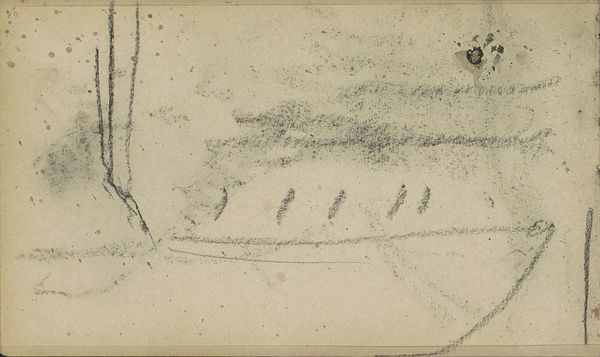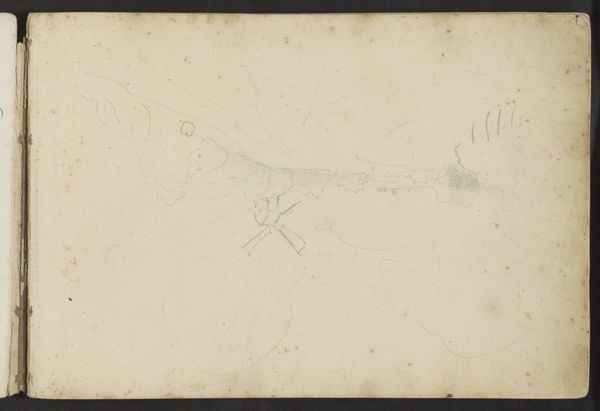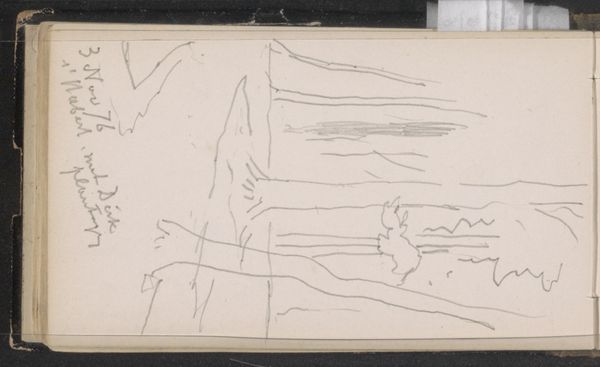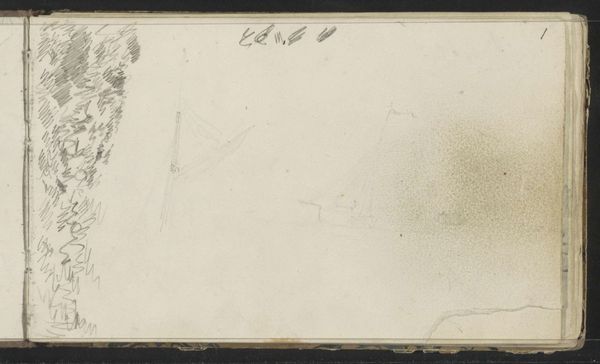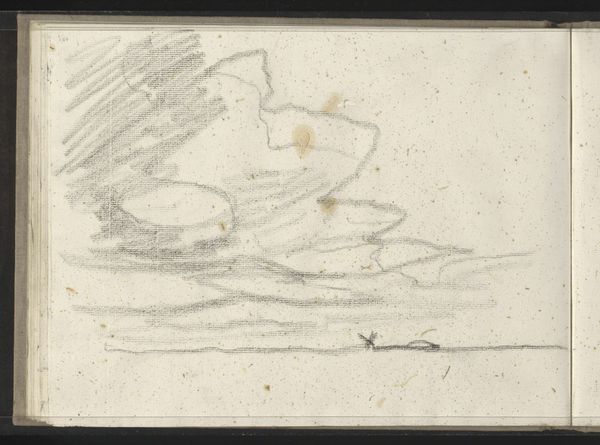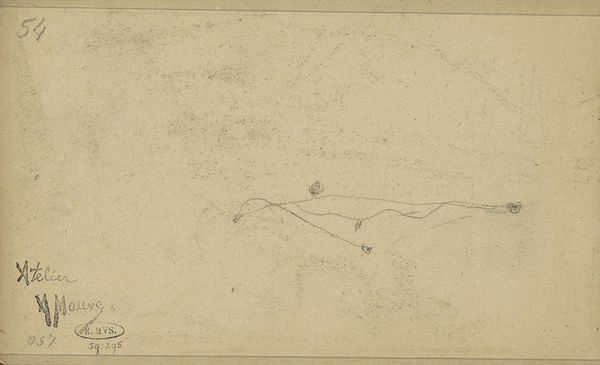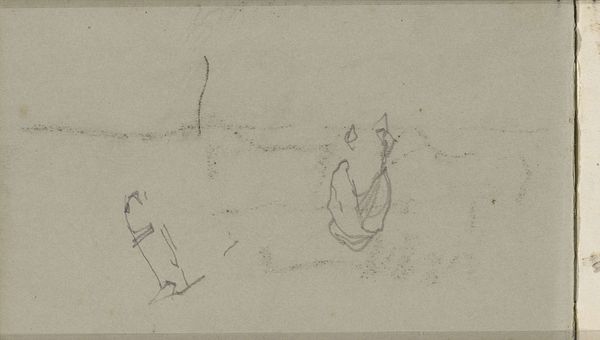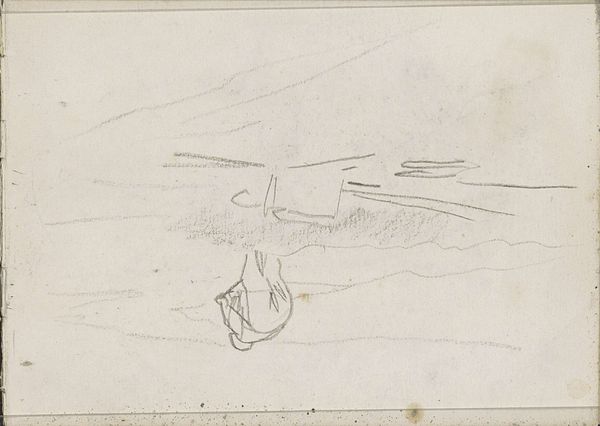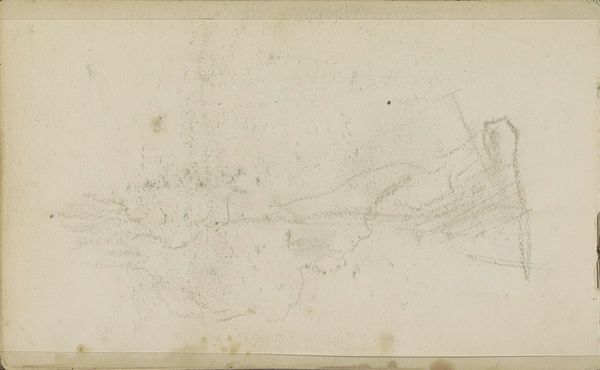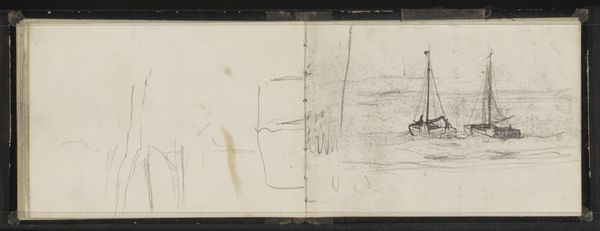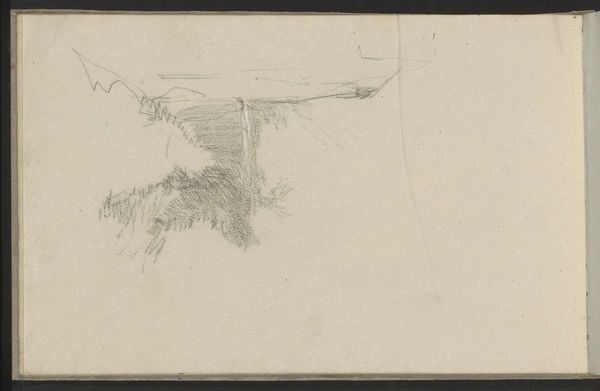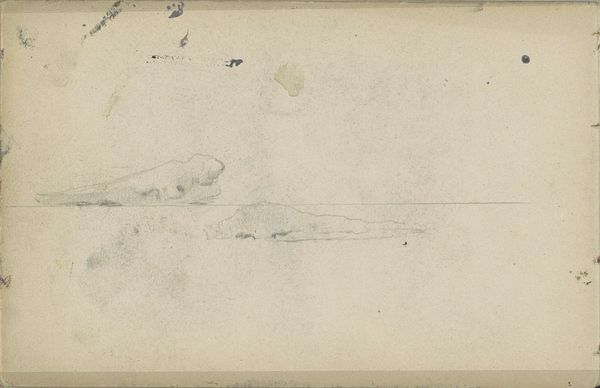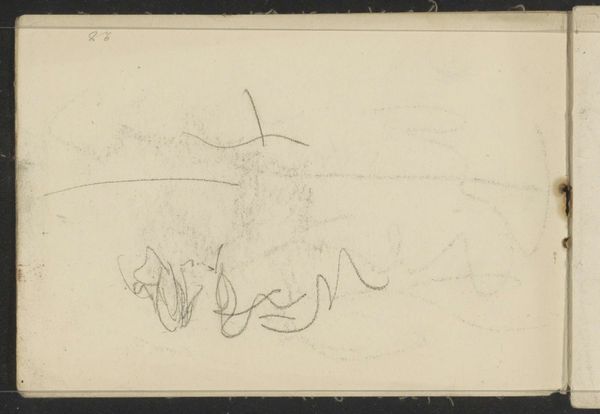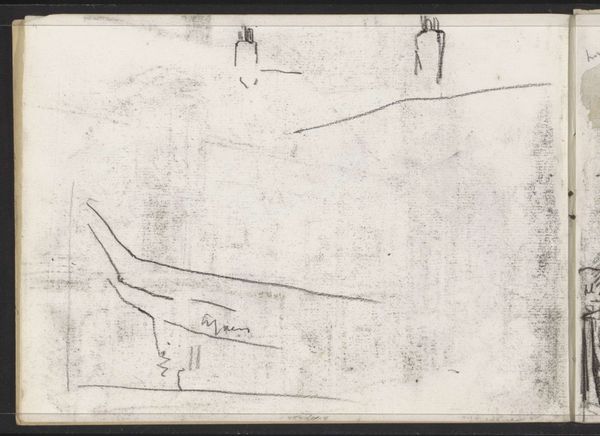
drawing, plein-air, pencil
#
drawing
#
impressionism
#
plein-air
#
landscape
#
pencil
Copyright: Rijks Museum: Open Domain
Editor: We're looking at "Landschap," a pencil drawing by Anton Mauve, created sometime between 1848 and 1888. It's held at the Rijksmuseum. It's incredibly minimal. Almost just a suggestion of a landscape. What strikes you when you look at it? Curator: The perceived simplicity of "Landschap" belies the social context in which it was created. The late 19th century saw increasing industrialization and urbanization, driving artists like Mauve to find solace in the natural world. What does this escape to "nature" really mean when land and representation become commodities? The sketch performs the idea, but the true subject of Mauve’s piece may be land ownership and control. Editor: So, this landscape, or the idea of a landscape, is speaking to anxieties of that time? Curator: Precisely. And remember, landscape painting wasn’t a neutral genre. It often reinforced existing power structures, particularly in terms of land ownership. Whose landscape are we really seeing here? And who has the privilege to contemplate its aesthetic qualities? Was it accessible for working-class people in burgeoning cities to simply enjoy open nature in the way the landed gentry did? These are essential questions for interrogating the apparent calm of the image. How do you see it in light of those questions? Editor: That context completely shifts how I perceive the work. I saw it as a tranquil scene, but now I'm wondering about the unsaid stories it carries, and who might be excluded from it. Curator: It makes us reconsider whose stories art history typically amplifies, and whose voices have been historically silenced. Editor: I’ll definitely view landscapes differently from now on. Thanks!
Comments
No comments
Be the first to comment and join the conversation on the ultimate creative platform.
